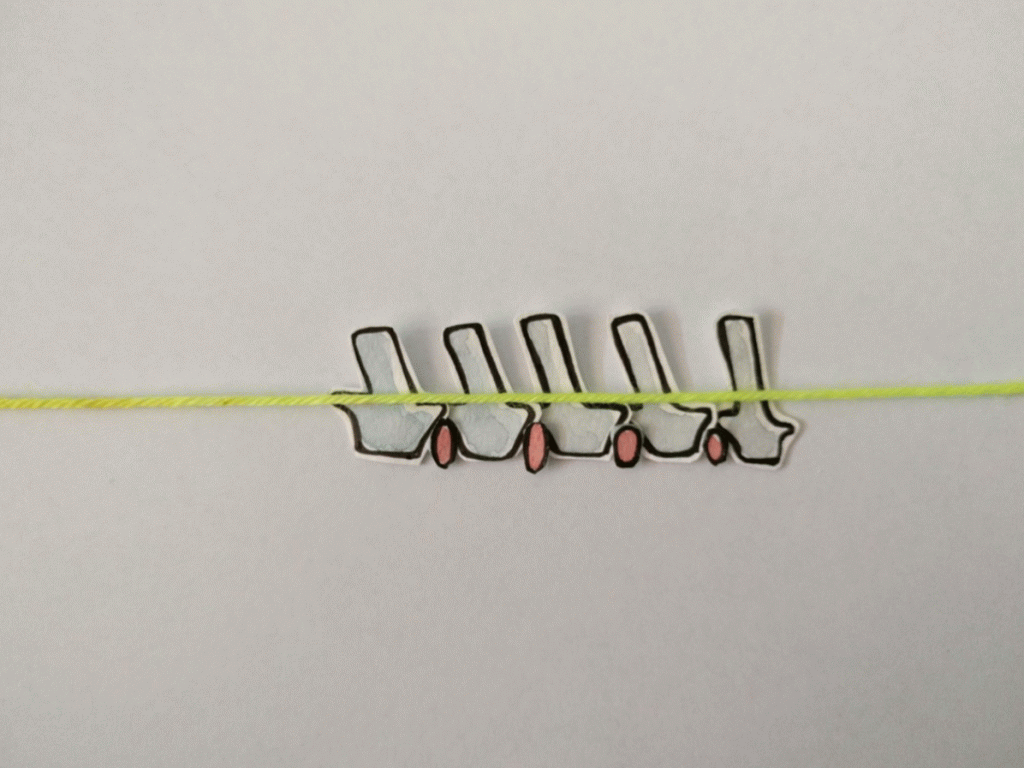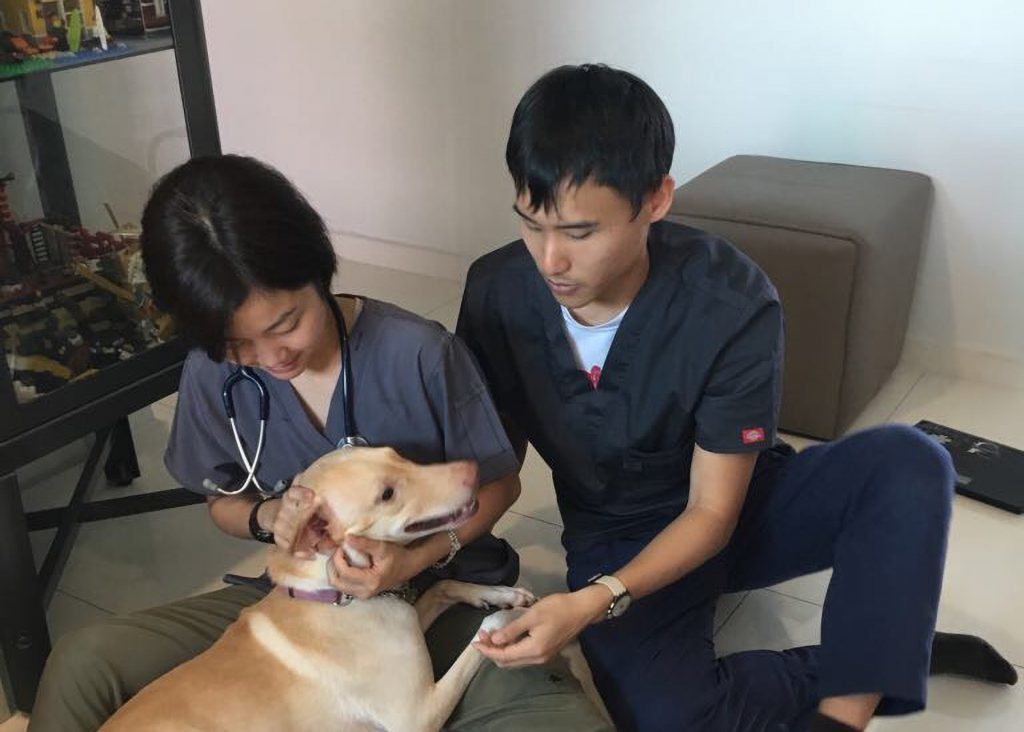Share Article:
What is IVDD?
The compression of the spinal cord by one or a few intervertebral disc(s). Depending on the degree of compression, signs could range from mild pain/numbness/discomfort to paralysis.

Above: the disc (red) has deformed and impinged on the spinal cord (yellow), causing IVDD.
What causes IVDD?
- Trauma
- Degeneration of intervetebral discs due to old age
- Breeds with intervetebral discs that are prone to herniation
- Dogs with abnormal vertebrae formation
What are the signs of IVDD?
- Limping
- Weak limbs (may be affecting just one limb or a few of them)
- Back or neck pain/sensitivity
- Withdrawal from play/inactivity
- Vocalising in pain
- Dragging hind limbs
- Unable to stand
- Unable to control bowels
- Urine incontinence
- Constipation
- Not urinating
- Abnormal stance
How does the vet diagnose IVDD?
- Taking history questions. Any trauma recently? Has this happened before? Breed predisposition to IVDD (Dachschund, Corgi etc.)
- Performing neurological tests
- X-rays or further imaging such as CT scan
Usually, tentative diagnosis is made without CT scan/MRI. Further imaging would be recommended if surgery is required.
What are the treatments for IVDD?
- Strict rest for the first few weeks. Further trauma could worsen condition. Ensure that flooring is non-slippery so pet could have better grip if attempting to get up
- Anti-inflammatory drugs and pain relief
- Vitamin B12 and other supplements which may support nerve repair
- Acupuncture has been shown to aid in recovery
- Hydrotherapy and massage as physiotherapy
- Surgery has to be considered if there is no deep pain in any of the limbs or if there is a worsening of clinical signs. There is a golden period for surgery and delays could worsen the outcome
Will my dog ever fully recover?
This depends on the degree of compression of intervertebral disc(s), and ability of the spinal cord to heal. Permanent paralysis is a possibility. Even with dogs which seemingly recovered, clinical signs could re-occur in the future.
You might be interested

Desensitization is a method to greatly reduce or extinguish a negative response to a particular stimulus.

Whilst attending to our house call appointments, we sometimes come across patients who may benefit from oxygen therapy.